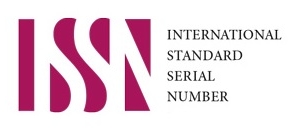Keywords cloud
Reducing porosity in AlSi10Mg parts processed by selective laser melting //
]]>25. Technological Peculiarities of Manufacturing Products of Irregular Profile by Method of Selective Laser Melting of 316L Powder Metal Material
Organization:
Yangel Yuzhnoye State Design Office, Dnipro, Ukraine
Page: Kosm. teh. Raket. vooruž. 2019, (1); 171-181
DOI: https://doi.org/10.33136/stma2019.01.171
Language: Russian
Annotation: This article considers the practical data on parts (specimens) manufacturing from powder metal material 316L using the innovative method of selective laser melting; the comparative study of the structure and physical and mechanical properties of 316L material, the combined influence of heat treatment and specimen orientation relative to the arrangement plate on the physical and mechanical properties and structure of specimens made of 316L alloy. Results are presented of the following: comparative study of the physical and mechanical properties and structure of specimens, manufactured using the selective laser melting technologies with horizontal and vertical placement relative to the arrangement plate; dependence of the ultimate strength and unit elongation on the annealing temperature. The possibility and suitability of the selective laser melting technology to manufacture parts and space-rocket hardware are evaluated. Experimental study of the specimens heat treatment conditions after selective laser melting enabled the definition of the optimal condition for the 316L alloy and have shown that heat treatment of the manufactured specimens under the heating at 1230 °С with the subsequent tempering at the temperature of 510 °С gives the homogeneous structure to the material of specimens made of alloy 316L, its dendritic structure, inherent in the specimen material in its initial condition, disappears after selective laser melting. Results of the mechanical tests of the obtained specimens have shown that the technology of selective laser melting provides development of products made of powder metal material 316L with optimal complex of physical and mechanical properties. It is shown that transition to the selective laser melting technology will enable production of the aerospace products, in particular geometrically-complex parts made of powder metal material 316L, in one technological cycle, excluding cutting, punching, refinement, cropping, welding, manufacturing of special tools or stamps
Key words: specimens, heat treatment, alloy, physical and mechanical properties, technological cycle
Bibliography:
1. Dovbysh V. M., Zabednev P. V., Zelenko M. A. Additivnye technologii I izdeliya iz metalla// Bibliotechka liteischika. №8–9. 2014. P. 33-38.
2. Kempen K., Thijs L., Van Humbeeck J., Kruth J.-P. Mechanical properties of AlSi10Mg produced by SLM / Physics Procedia. №39. 2012. Р. 439–446. https://doi.org/10.1016/j.phpro.2012.10.059
3. Olakanmi E. O. Selective laser sintering/melting (SLS/SLM) of pure Al, Al–Mg, and Al–Si powders: Effect of processing conditions and powder properties / Journal of Materials Processing Technology. №213. 2013. Р. 1387–1405. https://doi.org/10.1016/j.jmatprotec.2013.03.009
4. Eleftherios Louvis, Fox Peter, Sutcliffe Christopher J. Selective laser melting of aluminium components // Journal of Materials Processing Technology. – №211. 2011. Р. 275–284. https://doi.org/10.1016/j.jmatprotec.2010.09.019
5. Aboulkhair Nesma T., Everitt Nicola M., Ashcroft Ian, Tuck Chris. Reducing porosity in AlSi10Mg parts processed by selective laser melting // Additive Manufacturing Journal. №1–4. 2014. Р. 77 – 86. https://doi.org/10.1016/j.addma.2014.08.001
Full text (PDF) || Content 2019 (1)
Downloads: 70
Abstract views:
1435
Dynamics of article downloads
Dynamics of abstract views
Downloads geography
| Country | City | Downloads |
|---|---|---|
| USA | Los Angeles; Baltimore; Plano; Dublin; Phoenix; Phoenix; Phoenix; Phoenix; Phoenix; Phoenix; Phoenix; Phoenix; Phoenix; Phoenix; Phoenix; Phoenix; Phoenix; Phoenix; Monroe; El Monte; Ashburn; Ashburn; Seattle; Seattle; Ashburn; Ashburn; Ashburn; Ashburn; Ashburn; Mountain View; Tappahannock; Portland; Portland; San Mateo; San Mateo; San Mateo; Ashburn; Des Moines; Boardman; Ashburn; Pompano Beach; Seattle | 42 |
| Singapore | Singapore; Singapore; Singapore; Singapore; Singapore; Singapore; Singapore; Singapore; Singapore; Singapore; Singapore; Singapore; Singapore | 13 |
| Unknown | Canberra; | 2 |
| Germany | Falkenstein; Falkenstein | 2 |
| France | ; Paris | 2 |
| Canada | Toronto; Toronto | 2 |
| Netherlands | Amsterdam; Amsterdam | 2 |
| Bangladesh | Dhaka | 1 |
| Great Britain | London | 1 |
| Romania | Voluntari | 1 |
| Lithuania | Šiauliai | 1 |
| Ukraine | Dnipro | 1 |
So, for example, to obtain radial porosity, radial heat withdrawal is required. It is possible to alternate the porosity layers and monolithic metal layers. The dimensions of gasars pores are in the limits from 10 μm to 10 mm at total porosity from 7 to 55 (75%). Key words: gasars , gas-eutectic conversion , eutectics , porosity Bibliography: 1. gasars , gas-eutectic conversion , eutectics , porosity .
]]>24. Porous Cast Materials (Gasars). Options of Their Use in Space Rocket Hardware
Organization:
Yangel Yuzhnoye State Design Office, Dnipro, Ukraine
Page: Kosm. teh. Raket. vooruž. 2019, (1); 163-170
DOI: https://doi.org/10.33136/stma2019.01.163
Language: Russian
Annotation: Gasars is a new type of porous cast materials manufactured on the basis of metals and their alloys, some types of ceramics. The basis of the process is gas-eutectic conversion in the system metal-hydrogen. The process of investigation and creation of gasars was commenced in 1979 in the National Metallurgical Academy of Ukraine and is currently continued in Ukraine, the USA, China, Japan, South Korea, Poland and others. The gasars production technological process consists in melting the specified material (metal, alloy, ceramics) in hydrogen (or other active gas) atmosphere at a certain pressure. After the melt is saturated with active gas to a certain concentration, the crystallization process begins at which the pore formation process is launched. As the pores growth occurs perpendicular to crystallization front, the orientation of heat withdrawal influences pores location. So, for example, to obtain radial porosity, radial heat withdrawal is required. To obtain various structures, along with directed crystallization process, the pressure in crystallization chamber is an important factor, which drives the gasar morphology. The porous structure of gasars is diverse, there are the gasars with longitudinal, cylindrical, spherical, conical pores. It is possible to alternate the porosity layers and monolithic metal layers. The dimensions of gasars pores are in the limits from 10 μm to 10 mm at total porosity from 7 to 55 (75%). However, there is a possibility to obtain the pores with smaller diameter. The mechanical properties of gasars have a number of advantages as compared with conventional porous materials produced by different methods. Subsequent processing of the gasars does not differ from analogous non-porous materials, which is also an advantage over conventional porous materials. And in case when the diameter of pores is less than 50 μm, the exceedance of mechanical properties of gasars as compared with monolithic materials of the same chemical composition is observed. This is caused by the fact that the pores were formed during crystallization and at the action of pressure on a gasar, local hardening occurs. At present, the gasars have already found application as light and strong structural materials, filters, heat exchangers, dampers, slide bearings, catalyst elements, friction materials, etc. The use of gasars in space hardware will help to considerably reduce the mass of launch vehicle structural elements without worsening strength properties. The possibility of welding and soldering the gasars allows finding their application in the structure of propellant systems, compressed gas and propellants supply systems, creating filtering elements based on the gasars, including propellant spraying and mixing systems.
Key words: gasars, gas-eutectic conversion, eutectics, porosity
Bibliography:
1. Shapovalov V. I. Legirovanie vodorodom. D.: Zhurfond, 2013. 385 p.
2. Shapovalov V. TERMEC 2006 // International Conference on Processing and Manufacturing of Advanced Materials, July 4–8, 2006, Vancouver, Canada. Р. 529.
3. Komissarchuk Olga, Xu Zhengbin, Hao Hai, Zhang Xinglu, Karpov V. Pore structure and mechanical properties of directionally solidified porous aluminum alloys / Research & Development. Vol. 11, No.1, January 2014.
4. Karpov V. V., Karpov V. Yu. Vliyanie poristosti na teploprovodnost’ gazov/ Teoriya I praktica metallurgii. 2003. № 4.
Full text (PDF) || Content 2019 (1)
Downloads: 89
Abstract views:
1403
Dynamics of article downloads
Dynamics of abstract views
Downloads geography
| Country | City | Downloads |
|---|---|---|
| USA | Boardman; Los Angeles; Baltimore; Modesto; Plano; Miami; Columbus; Columbus; Ashburn; Ashburn; Phoenix; Phoenix; Phoenix; Phoenix; Phoenix; Phoenix; Phoenix; Phoenix; Phoenix; Phoenix; Phoenix; Phoenix; Phoenix; Phoenix; Phoenix; Phoenix; Monroe; El Monte; El Monte; Ashburn; Ashburn; Seattle; Seattle; Ashburn; Houston; Seattle; Tappahannock; Portland; San Mateo; San Mateo; San Mateo; San Mateo; Des Moines; Boardman; Boardman; Ashburn; Ashburn; Ashburn; Ashburn; Ashburn; Pompano Beach; Seattle; Seattle | 53 |
| Singapore | Singapore; Singapore; Singapore; Singapore; Singapore; Singapore; Singapore; Singapore; Singapore; Singapore; Singapore; Singapore; Singapore | 13 |
| Germany | Falkenstein; Frankfurt am Main; Limburg an der Lahn; Falkenstein | 4 |
| Canada | Toronto; Toronto; Toronto; Toronto | 4 |
| Unknown | ;; | 3 |
| Ukraine | Kyiv; Kyiv; Dnipro | 3 |
| Netherlands | Amsterdam; Amsterdam | 2 |
| Azerbaijan | Baku | 1 |
| Great Britain | London | 1 |
| Syria | 1 | |
| Indonesia | Dumai | 1 |
| France | Paris | 1 |
| Romania | Voluntari | 1 |
| Lithuania | Šiauliai | 1 |


